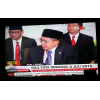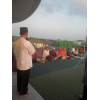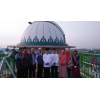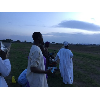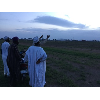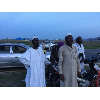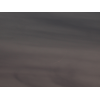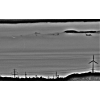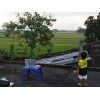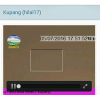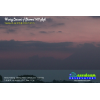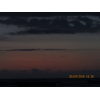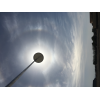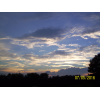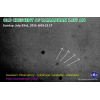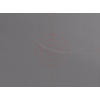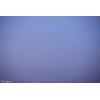Visibility of Shawwal Crescent 1437 AH
- When to Observe Shawwal Waxing (NEW) Crescent ?
- Shawwal Waxing (NEW) Crescent Observation Results
- The OFFICIAL First Day in Different Countries
- When to Observe Ramadan Waning (OLD) Crescent ?
- Ramadan Waning (OLD) Crescent Observation Results
When to Observe Shawwal Waxing (NEW) Crescent ?
The geocentric conjunction (Geocentric New Moon) will occur Inshalla on (Monday 04 July 2016) at 11:01 UT.
Sighting the new crescent on (Monday 04 July 2016) and (Tuesday 5 July 2016) is shown in the below graphs using the program Accurate Times by Mohammad Odeh according to Odeh criterion. Where:-
- It is impossible to see the crescent from the areas located under the red color. Because either the Moon on this day sets before the Sunset and/or the topocentric conjunction occurs after the Sunset.
- The crescent is expected to be seen by optical aid only from the areas located under the blue color.
- The crescent is expected to be seen by optical aid from the areas located under the magenta color. In these areas the crescent could be seen by naked eye if the atmospheric conditions are superb and the observer is experienced.
- The crescent is expected to be easily visible by naked eye from the areas located under the green color.
- The crescent cannot be seen from uncolored areas, even though the Moon sets in these locations after the Sunset and the topocentric conjunction occurs before the Sunset, but the Moon is not sufficiently illuminated in order to be seen as crescent even by optical aid.
- Kindly notice that the below graph shows the possibility of seeing the crescent from areas between 60 degrees north of Equator down to 60 degrees south of Equator.
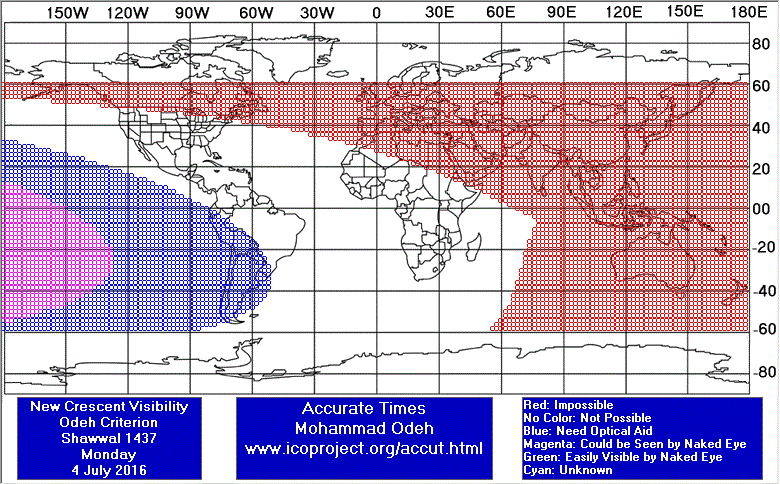

According to the Universal Hejric Calendar (UHC), which is based on the calculated crescent visibility, the start of this month in the Eastern Region will be on Wedensday 06 July 2016 and in the Western Region will be on Tuesday 05 July 2016. Kindly notice that the UHC is a pre-calculated calendar, which adopts a certain criterion to start the new Hejric month. Your country/organization might adopt different criterion to start the new Hejric month. So it is highly advised to read the UHC website before giving any judgment.
- Results of seeing the crescent, and the first day of the month in different countries will be added here Inshalla as we receive the reports from ICOP's members. If you wish to be a member in ICOP, or to know more about it, kindly click here.
Shawwal Waxing (NEW) Crescent Observation Results
Mon 04 July 2016
Indonesia
Mr. AR Sugeng Riyadi said: "The crescent before sunset was not captured because the sky was very hazy ..."
Mr. AR Sugeng Riyadi said: "The Rukyat Hilal of Shawwal 1437 AH event was attended by the director of PPMI Assalaam, Ustadz Drs. H. Uripto M. Yunus, M.Ed., and his official staffs, Team of URAIS Kemenag (ministry of religious affairs) for Sukoharjo, Boyolali, Klaten, members of CASA-Assalaam and members of Solo Astronomy Club and moslems in Solo Raya. Based on the negative reports from all observation places in Indonesia, the Ministry of Religious Affairs of the Republic of Indonesia in the Sidang Isbath decided that Shawwal 1st, 1437 A.H starts on Wednesday July 6th, 2016. "Ied Mubarak, Taqabbal Allaah Minna wa Minkum""
Mauritania
Dr. Elkhalil Maouloud said: "بعد ساعتين من التحرى، لم تتوصل اللجنة المركزية لمراقبة الأهلة بما يثبت رؤية الهلال وعليه فسنكمل شهر رمضان 30 يوما يوم الثلاثاء الموافق 5 يوليو 2016"
Morocco
Nigeria
Tue 05 July 2016
Algeria
Mr. Hocine Chikh Aissa said: "The new crescent of shawwal 1437 was seen, 08 persons had tried to see this crescent, But he was seen with naked eyes By two persons and third With great difficulty. The western horizon was partly cloudy and hazy, Takabal Allah EL siam wa EL kiam Aid mubarek for all Muslimen"
Australia
Bahrain
Eng. Ali Majeed Al Hajari said: "تمت الرؤية بصعوبة بواسطة التلسكوب فقط دون تصويره بواسطة الكاميرا ولا بالعين المجردة وكل عام وانتم بالف خير"
Brunei Darussalam
Mr. Hazarry Haji Ali Ahmad said: "The new moon crescent was seen at 6.50 local time (15 minutes after sunset) in between cloud breaks through telescopes. Visual naked eyes observation was tried but failed to sight due to sky conditions with clouds especially near the horizon. Observation was conducted by the members of the astronomical society of Brunei Darussalam. "
France
Mr. Farid Fofana said: "لمشاهدة نتائج الرصد الأخرى يرجى زيارة موقعنا www.olmf.fr"
Germany
Eng. Martin Elsaesser said: "The observation of the young crescent after sunset was difficult as we had a lot of clouds. I could see Venus for a few seconds before sunset, but the crescent remained hidden. At sunset the proper spot in the sky was covered in clouds, only a very narrow band on the horizon remained clear. I had set up an imaging system with a small lens so i would know when and where the crescent reached the gap. When the crescent appeared it was very faint and only barely visible in 12x50 binoculars as the imaging system showed me exactly where to look. I could only see it visually for a few minutes but the imaging system could follow it till it had set. So despite difficult weather conditions and a small lag time this was a visual observation after sunset."
Eng. Martin Elsaesser said: "I could not observe the crescent yesterday (the day of conjunction) due to clouds. Today the skies were blue and conditions were far easier. I could find the crescent in mid-morning with the imaging software and a small lens on a simple tripod. I placed the lens just inside the shadow of a house to hide from the glare of the sun. I did not try visual observation this morning. Hopefully i can observe the crescent visually after sunset. "
Hungary
Indonesia
Mr. AR Sugeng Riyadi said: "The Hilal for Shawwal 1437 was SEEN by naked eye throughout Indonesia on 5 July 2016 after Maghrib. Notably from: 1. Bintang Musir Beach, Ketapang, West Borneo -- by Muhammad Aan Subhasyah et al, clear skies thus long sighting experience. 2. Juwiring, Klaten, Central Java -- by Ahmad Badrus Salam Alfa Rasyid (8 yr old), confirmed by telephoto took by myself, before dissapearing behind clouds. 3. Ciburial Village, North Bandung, West Java -- by Ahmad I. Adjie and Madihah Bajri, short sighting due to clouds closing in on to the Hilal. 4. Watoe Dakhon Observatory both by telescope then naked eye, Ponorogo, East Java -- by Ahmad Junaidi et al. Sightied from 17:40 to 17:50 UTC +7. The new crescent of Shawwal 1437 AH was also captured by telescope on several locations by BMKG Teams (time when the crescent was seen) as noted below: 1. Biak (18:14-18:36 LT) 2. Ternate (19:23-19:26 LT) 3. Kupang (17:48-18:24 LT) 4. Makassar (17:57-18:35 LT) 5. Palu (18:06-18:46 LT) 6. Manado (18:10-18:29 LT) 7. Makassar II (18:34- 18:37 LT) 8. Padang (18:43-19:04 LT)"
Mr. AR Sugeng Riyadi said: "The sky was clear with little hazy. The crescent was captured by CASA Team (Mr. Adnan, mr. Darmawan and mr. Widi) at Assalaam Observatory on Tuesday morning, 05 July 2016."
Iran
Mr. Hossein Janghorbani said: "In the name of God Shawwal Crescent Observation Report Astronomy and Geophysics Center of Shahreza – The Crescent Association of Shahreza-Astronomy Center Of Khomeynishahr Isfahan Report by: Hossein Janghorbani (NajmoSepehr-Sadrolmonajjemin) – Manager of Shahreza Crescent Association and Red Crescent’s Astronomy and Geophysics Center Date: Tuesday, 07/05/2016 Location: Damzad foothills in the East of Shahreza (latitude: 32 00 N, longitude: 51 52 E, elevation: 1825m from sea level, time zone: +4.5 GMT) Equipments: Two set of 15*70 binoculars, Three sets of 20*90 binoculars,one sets of 20*80 binoculars , one telescope 10 inch , one telescope 8 inch , one sets of 25*100 binoculars , One compass. Atmospheric condition: hazy Horizon obstacles: about 2/5° Apparent Sunset: 20:00 Apparent Moonset:20:39 Results: Moon crescent was seen by 20*90 binoculars by Mahsa Khajeh at 20:09, for the first time. Moon crescent was seen by 15*70 binoculars by Hossein Janghorbani at 20:14, for the first time. Other group members observed crescent by binoculars subsequently. Crescent observed by Reza Janghorbani 20:19 by naked eye. Crescent observed by Amir Bonakdar,Pooya Karimi,Ahmad Rahmati,Abbas Karbalaee,Ali Rezaee,Abbas Ali Mokhtari,Mohmmad Karim Babarabiee,Hossein Janghorbani,Reza Janghorbani,Tahereh Shafiee,Mahsa Khajeh 20:33 by naked eye. At the end , Festival Fifth spring Ramadan was held Observers: 1.Pouya Karimi 2.Abasali Mandegari 3.Milad Baghlavai 4.Negar Baghlavai 5.Atie Hajheidary 6.NastaranTalebi 7.Marzie Peymani 8.Razie Akbari 9.Amir Bonakdar 10.Safura Safari 11.Ali saffari 12.Arash karbalaiy 13.Abas Karbalaiy 14.Leila Fakhari 15.Ali Rezaei 16.Fateme Mohamadi 17.Zahra Aghaei 18.Seyed Ali Banihashemi 19.Amirhossein Hajyian 20.Seyed Moslem Rezvani 21. Alireza Mojiri 22. Shahriyar Gholami 23. Ariya Baba Rabie 24.Poya Hafar 25. Mohamad Ansari 26. Seyed Ali Bani Hashemi 27. Abbas Karbalaei 28. Hamid Reza Khadem 29. Saeid Barzoki 30. Sajad Farhangfar 31. Mohamad Reisi 32. Dr. Ali Akbar Taki 33. Haj Jaber Bahrami 34. Mohamad Karim Baba Rabie 35. Matin Eslami 36. Mojtaba Shafiei 37. Ahmad Rahmati 38. Ali Rahmati 39. Fatemeh Sadat Emami 40. Fatemeh Hadad 41. Naimeh Sadat Saniei 42. Marziyeh Givi 43. Negar Baba Rabie 44. Tayebeh Shafiei 45. Tahereh Shafiei 46. Fatemeh Mokhtari 47. Mehdi Kolahdoz 48. Moid Vaziriyan 49. Saeid Malekiyan 50. Morteza Ansaripoor 51. Zohre Karimpor 52.Shahnaz Same 53. Zahra Fallahi 54._Nazanin Pirozmandan 55._ Masome Hafar_56.Ziba Hafar_57.Neda Hamidia 58._Soheila Eslami_59.Shiva Ansaripor_60.Mahsa Khaje _61.Zahra Farokhpor_62.Behnaz Maarefvand _63.Zohre Salek_64.Shahriar Gholami_65.Hossein Janghorbani_66.Ali Janghorbani_67.Reza Janghorbani _68.Darush Janghorbani _69.Mohamadjavad Nikeghbal_70.Sadra Nikeghbal_71.Javad Amiri_72.Mehdi Ghasemi_73.Abdolreza Gholami _74. Mohamadkarim Babarabie _75. Mohamad Mohajeri_76.Mohsen Tavoosi "
Mr. Hossein Janghorbani said: "In the name of God Shawwal Crescent Observation Report Astronomy and Geophysics Center of Shahreza – The Crescent Association of Shahreza-Astronomy Center Of Khomeynishahr Isfahan Report by: Hossein Janghorbani (NajmoSepehr-Sadrolmonajjemin) – Manager of Shahreza Crescent Association and Red Crescent’s Astronomy and Geophysics Center Date: Tuesday, 07/05/2016 Location: Damzad foothills in the East of Shahreza (latitude: 32 00 N, longitude: 51 52 E, elevation: 1825m from sea level, time zone: +4.5 GMT) Equipments: Two set of 15*70 binoculars, Three sets of 20*90 binoculars,one sets of 20*80 binoculars , one telescope 10 inch , one telescope 8 inch , One compass. Atmospheric condition: hazy Horizon obstacles: about 2/5° Apparent Sunset: 20:00 Apparent Moonset:20:39 Results: Moon crescent was seen by 20*90 binoculars by Mahsa Khajeh at 20:09, for the first time. Moon crescent was seen by 15*70 binoculars by Hossein Janghorbani at 20:14, for the first time. Other group members observed crescent by binoculars subsequently. Crescent observed by Reza Janghorbani 20:19 by naked eye. Crescent observed by Amir Bonakdar,Pooya Karimi,Ahmad Rahmati,Abbas Karbalaee,Ali Rezaee,Abbas Ali Mokhtari,Mohmmad Karim Babarabiee,Hossein Janghorbani,Reza Janghorbani,Tahereh Shafiee 20:33 by naked eye. At the end , Festival Fifth spring Ramadan was held Observers: 1.Pouya Karimi 2.Abasali Mandegari 3.Milad Baghlavai 4.Negar Baghlavai 5.Atie Hajheidary 6.NastaranTalebi 7.Marzie Peymani 8.Razie Akbari 9.Amir Bonakdar 10.Safura Safari 11.Ali saffari 12.Arash karbalaiy 13.Abas Karbalaiy 14.Leila Fakhari 15.Ali Rezaei 16.Fateme Mohamadi 17.Zahra Aghaei 18.Seyed Ali Banihashemi 19.Amirhossein Hajyian 20.Seyed Moslem Rezvani 21. Alireza Mojiri 22. Shahriyar Gholami 23. Ariya Baba Rabie 24.Poya Hafar 25. Mohamad Ansari 26. Seyed Ali Bani Hashemi 27. Abbas Karbalaei 28. Hamid Reza Khadem 29. Saeid Barzoki 30. Sajad Farhangfar 31. Mohamad Reisi 32. Dr. Ali Akbar Taki 33. Haj Jaber Bahrami 34. Mohamad Karim Baba Rabie 35. Matin Eslami 36. Mojtaba Shafiei 37. Ahmad Rahmati 38. Ali Rahmati 39. Fatemeh Sadat Emami 40. Fatemeh Hadad 41. Naimeh Sadat Saniei 42. Marziyeh Givi 43. Negar Baba Rabie 44. Tayebeh Shafiei 45. Tahereh Shafiei 46. Fatemeh Mokhtari 47. Mehdi Kolahdoz 48. Moid Vaziriyan 49. Saeid Malekiyan 50. Morteza Ansaripoor 51. Zohre Karimpor 52.Shahnaz Same 53. Zahra Fallahi 54._Nazanin Pirozmandan 55._ Masome Hafar_56.Ziba Hafar_57.Neda Hamidia 58._Soheila Eslami_59.Shiva Ansaripor_60.Mahsa Khaje _61.Zahra Farokhpor_62.Behnaz Maarefvand _63.Zohre Salek_64.Shahriar Gholami_65.Hossein Janghorbani_66.Ali Janghorbani_67.Reza Janghorbani _68.Darush Janghorbani _69.Mohamadjavad Nikeghbal_70.Sadra Nikeghbal_71.Javad Amiri_72.Mehdi Ghasemi_73.Abdolreza Gholami _74. Mohamadkarim Babarabie _75. Mohamad Mohajeri_76.Mohsen Tavoosi "
Iraq
Jordan
Saudi Arabia
Mr. Turki Alamri said: "I started early morning with AOD 619 nm 0.18 hazy with some high clouds sky ,first sight was at 8:30 am Lt i waited for half an hour to get a better sky or a small gap iried to see the crescent visually but could not due to bad sky condition."
Mr. Turki Alamri said: "I tried to see the new crescent through my telescope first after that as the sun goes more below the horizon i tried with binocular and saw it i waited for more 10 minutes to get a better contrast so i saw it by naked eye 7:30 pm Lt , its a .difficult sight due to the bad sky condition that we had PS; half an hour before sun set i tried to see the crescent through an eye piece attached to 610 nm red filter but i did not see it i think its due to the bad sky condition."
Sri Lanka
Mr. Mohamed Irfhan Razick said: "Alhamdulillah, sighted the crescent of Shawwal1437 at Nimal Road masjid by myself and many others. Eid Mubarak to all!"
Mr. Abdul Rahman Razeen said: "Aalaikum. Today 5-7-2016AD=29-9-1437AH is the sighting day for the month of Shawwal.. I was in Colombo Grand Mosque'.The parameters are Sun set:6.31pm. Moon set:7.22pm. Lag=51minutes, R.Azimuth=-07deg04', Altitude=10deg52', Elongation=13deg42'. The prediction of the astronomers=Easily visible for naked eye. The crescent was sighted 20 minutes after Sunset right round the country i:e North,,East,West of Srilanka. Hence it was decided to end the proceeding month 29day's and to start the month of Shawwal on 6-7-2016 by the president C.G.M.H.C. M.Riyadh (Baari) along with A.C.J.U.and M.R.C.A. The sighting day for the month of Dhul Qadah will fall on Wednesday 3-8-2016"
Tunisia
Mr. AlTayyeb AlSahili said: "في جهة الغروب الضباب كثيف والسماء مغيمة جزئيا. لم أتمكن من رؤية الهلال لا بالمنظار ولا بالعين المجردة "
United Kingdom
United States
Dr. Javad Torabinejad said: "I arrived at my sighting location (the Blacksburg Middle School) at 8:21 pm EDT. Using a pair of binoculars (7X50), I started scanning the partly cloudy and hazy western horizon. My first binocular sighting was at 8:23 pm (sunset: 8:45 pm). Immediately after, I saw the very thin crescent with naked eyes. The horns were at 2:00 and 6:00 O'clock (2:00;4:00;6:00). At 8:26, I saw Venus with the aid of the binoculars. It was rather difficult to see Venus with naked eyes even at 8:40 pm when I thought that I could see it (difficult to say that I saw it, however). After the initial moon and Venus sightings and prior to 8:40 pm, I left the location. I stayed in the second location till 9:16 pm when the moon was still 2-3 degrees above horizon (moonset: 9:40 pm)."
The OFFICIAL First Day in Different Countries
Tue 05 July 2016
1 . Turkey
Wed 06 July 2016
1 . Algeria
2 . Australia
3 . Bahrain
4 . Brunei Darussalam
5 . Burkina Faso
6 . Egypt
7 . France
8 . Guinea
9 . Indonesia
10 . Iran
11 . Iraq
12 . Japan
13 . Jordan
14 . Kuwait
15 . Lebanon
16 . Libya
17 . Malaysia
18 . Mauritania
19 . Morocco
20 . New Zealand
21 . Nigeria
22 . Oman
23 . Pakistan
24 . Palestine
25 . Qatar
26 . Saudi Arabia
27 . Singapore
28 . Sri Lanka
29 . Sudan
30 . Syria
31 . Thailand
32 . Tunisia
33 . United Arab Emirates
34 . United States
35 . Yemen
Thu 07 July 2016
1 . Bangladesh
2 . India
When to Observe Ramadan Waning (OLD) Crescent ?
The geocentric conjunction (Geocentric New Moon) will occur Inshalla on (Monday 04 July 2016) at 11:01 UT.
Sighting the OLD crescent on (Monday 04 July 2016) and (Sunday 3 July 2016) is shown in the below graphs using the program Accurate Times by Mohammad Odeh according to Odeh criterion. Where:-
- It is impossible to see the OLD crescent from the areas located under the red color. Because either the Moon on this day rises after the Sunrise and/or the topocentric conjunction occurs before the Sunrise.
- The crescent is expected to be seen by optical aid only from the areas located under the blue color.
- The crescent is expected to be seen by optical aid from the areas located under the magenta color. In these areas the crescent could be seen by naked eye if the atmospheric conditions are superb and the observer is experienced.
- The crescent is expected to be easily visible by naked eye from the areas located under the green color.
- The crescent cannot be seen from uncolored areas, even though the Moon rises in these locations before the Sunrise and the topocentric conjunction occurs after the Sunrise, but the Moon is not sufficiently illuminated in order to be seen as crescent even by optical aid.
- Kindly notice that the below graph shows the possibility of seeing the crescent from areas between 60 degrees north of Equator down to 60 degrees south of Equator.
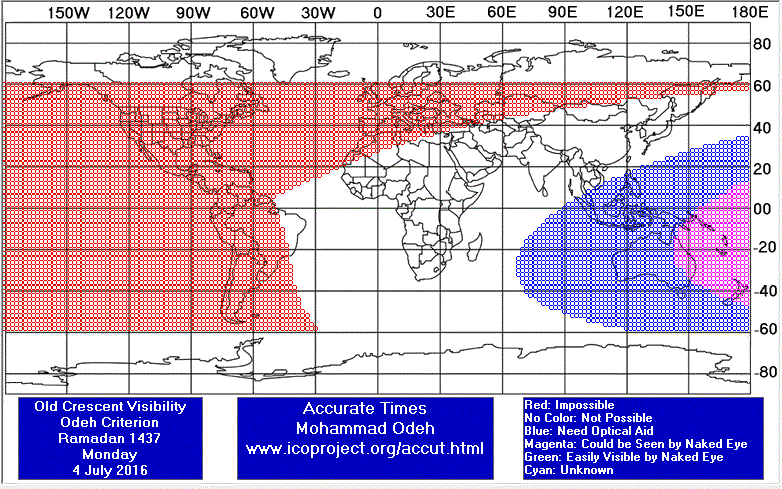
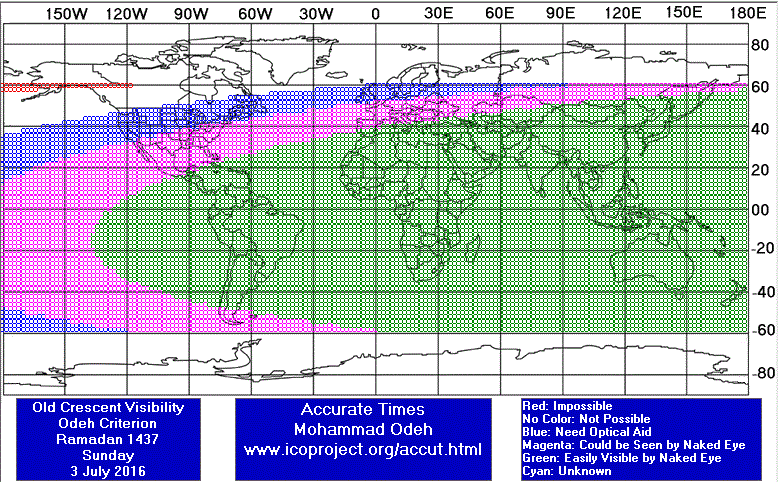
Ramadan Waning (OLD) Crescent Observation Results
Sun 03 July 2016
Algeria
Egypt
Mr. AbdelHamid Ahmed said: "كان الجو غريبا جدافي ناحية الشرق حيث الضباب والغيوم الكثيفة مما حال بيني وبين رؤية الهلال كل عام وانتم بخير"
Indonesia
Mr. AR Sugeng Riyadi said: "The daytime waning crescent of Ramadhan 1437 AH was captured.on Sunday, 03 July 2016 at 09:23 LT. Team of Assalaam Observatory (Ust. Adnan, Ust. Widi and Me) colaborated with Indonesian Astrophotography Community."
Mr. AR Sugeng Riyadi said: "The old crescent of Ramadhan 1437 AH was seen on Sunday, 03 July 2016 before Sunrise from Assalaam Observatory, The Modern Boarding School of Islam ASSALAAM Pabelan Kartasura Sukoharjo - Surakarta Central Java Indonesia. It's seen in short time before covered by thin cloud."
Kuwait
Eng. Mustafa Alarbash said: "تم رصد الهلال الى الساعه 1:30م تقريبا و بعدها لم يظهر عن طريق رصد السي سي دي كاميرا"
